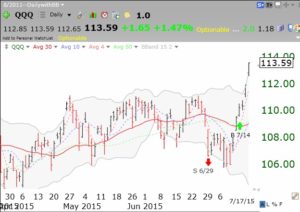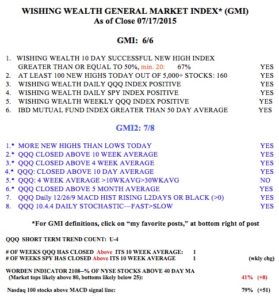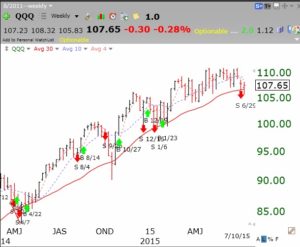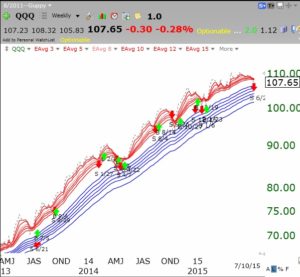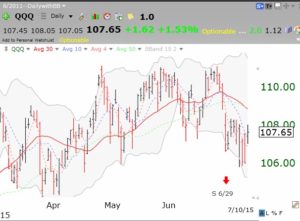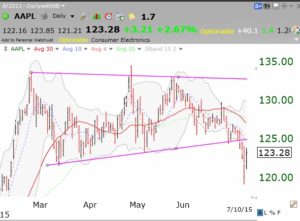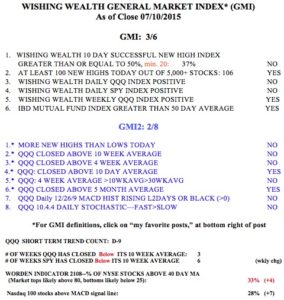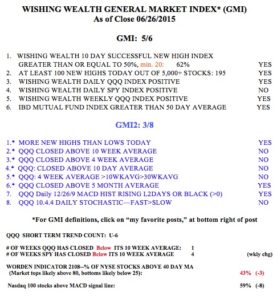In reviewing my market statistics this weekend, I was surprised by what I learned. With the Nasdaq 100 (QQQ) streaming to an all-time high last week I expected to see strength in my measures of how individual stocks had performed. The QQQ closed up 5.5% last week to an all-time high. But the SPY (+2.4%) and DIA (+1.8%) have not followed it to record territory. Then I found that only 34% of the Nasdaq 100 stocks rose on Friday and 39% of the SPY (S&P 500) stocks. While these were strange inconsistencies, the most striking finding was that there were more new yearly lows on Friday than yearly highs in my universe of over 5,000 stocks! So what is driving the Nasdaq 100 index to record levels? This index weights stocks by capitalization (total shares outstanding by price per share). Among the stocks in the index with the highest weighting are GOOG and FB, up 16% and 4.5% on Friday alone. So a few very large cap stocks in the Nasdaq 100 index (NFLX, CELG, AMZN) are responsible for this record run and are distracting from the weakness in the other stocks. It does not bode well for an army when most troops do not follow the generals. I would not be surprised to see this market top out shortly after the major tech stocks report earnings this week.
Two other indicators I follow signal short term overbought in the QQQ. 56% of the stocks in the QQQ have overbought statistics and this daily chart of the QQQ shows it is now above its top 15.2 daily BB. Look what happened last April when the QQQ behaved this way. The 7% rise in the QQQ the past 6 days looks to me like a buying climax. (I hold a small trading position in SQQQ.) If the SPY and DIA reach record levels I will have to revise my outlook.
